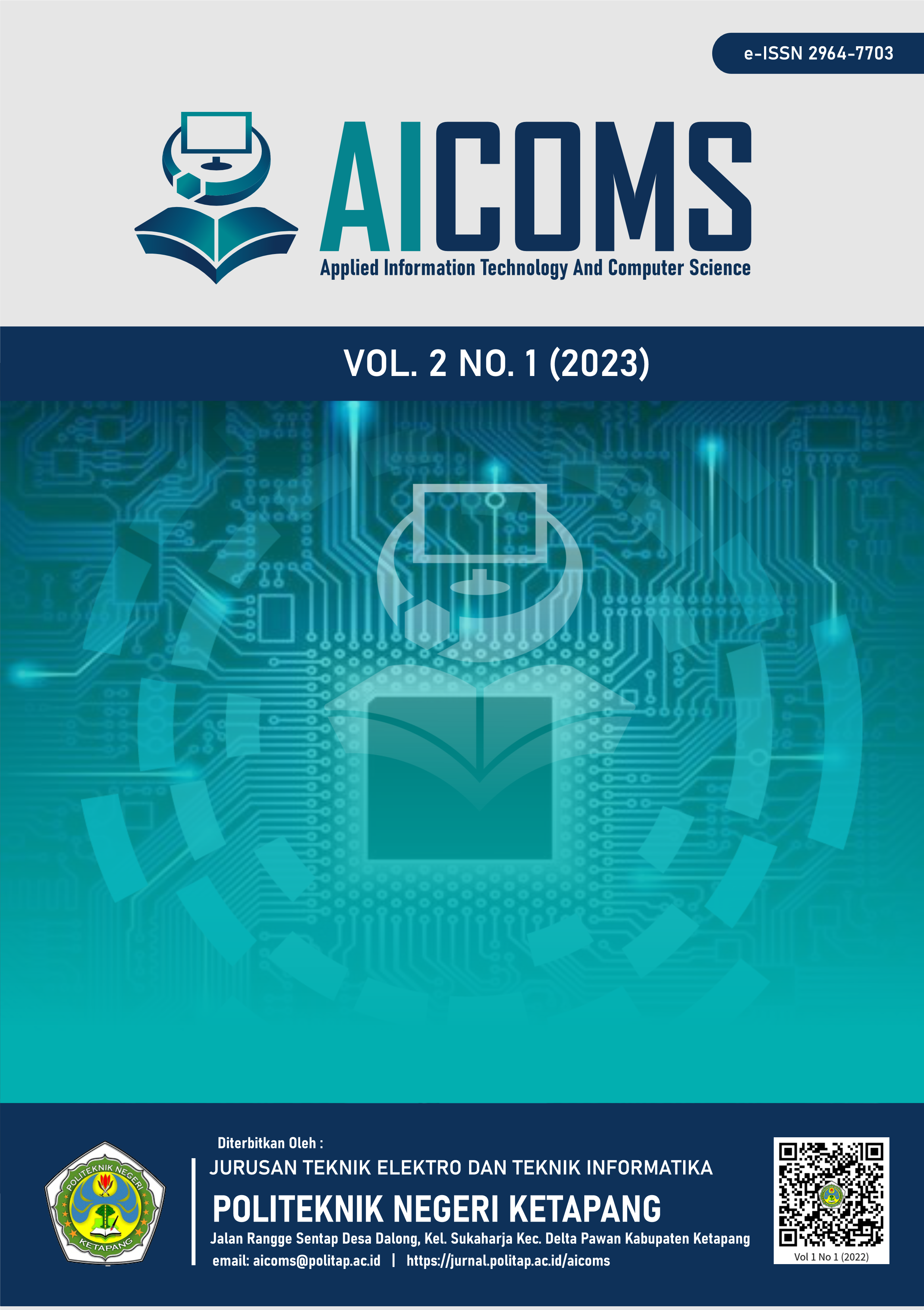Temperature-Humidity Monitoring and Security System for Swiftlet Houses Based on Internet of Things Using MQTT
DOI:
https://doi.org/10.58466/aicoms.v2i1.1788Keywords:
swiftlet, MQTT, temperature sensor, swiftlet house security, Internet of ThingsAbstract
Swiftlets are a type of bird with high economic value, especially due to their saliva, which is used as a raw material in health and beauty products. In swiftlet farming, maintaining optimal environmental conditions—specifically a temperature range of 26–29°C and humidity levels of 80–90%—is essential. However, two main challenges faced by swiftlet house owners are the difficulty in monitoring temperature and humidity in real-time and the increasing threat of nest theft. This study aims to develop a temperature, humidity, and security monitoring system for swiftlet houses based on the Internet of Things (IoT) using the MQTT Broker protocol. The system integrates the DHT11 sensor to measure temperature and humidity, an LDR sensor to detect light intensity, and a magnetic switch to monitor door access. The research methodology follows the Software Development Life Cycle (SDLC) using the Waterfall model, with data collection techniques including literature studies, observation, and interviews. The development process involves system architecture design, hardware setup, data flow modeling, interface design, and system testing. The final outcome is an IoT-based monitoring system that provides real-time environmental data and security notifications via Telegram and a visual interface using Node-RED. Black box testing confirms that all sensors and notification systems function correctly as intended
References
Z. Afandy and M. A. Nugroho, “Budidaya sarang burung walet untuk peningkatan ekonomi masyarakat Desa Kalora Poso Pesisir Utara,” *JEKSYAH: Islamic Economics Journal*, vol. 1, no. 02, pp. 89–97, 2021.
R. Rakhmadi, A. Hadiawan, D. Muhammad, and S. Zahratun, “Potensi ekspor sarang burung walet Provinsi Lampung,” *Jurnal Hubungan Internasional Indonesia*, vol. 4, no. 1, pp. 91–100, 2022.
P. T. Ningsih, T. Tadjuddin, and A. W. Indrawan, “Rancang Bangun Sistem Kontrol Suhu dan Kelembaban Sarang Burung Walet Berbasis Internet Of Things,” in *Seminar Nasional Teknik Elektro dan Informatika (SNTEI)*, pp. 251–257, Oct. 2021.
D. Maulana, I. G. A. P. R. Agung, and I. P. E. D. Nugraha, “Sistem Monitor Budi Daya Sarang Burung Walet Berbasis Esp32-Cam Dilengkapi Aplikasi Telegram,” *Jurnal SPEKTRUM*, vol. 9, no. 1, 2022.
A. Iskandar, “Implementasi IoT Pada Sistem Monitoring dan Kendali Otomatis Suhu Dan Kelembaban Ruangan Sarang Burung Walet Berbasis Mikrokontroler,” *Jurnal Cyber Tech*, vol. 4, no. 8, 2021.
M. A. Hidayat, “Sistem Monitoring Suhu, Kelembapan, dan Cahaya pada Rumah Burung Walet Menggunakan NodeMCU ESP8266,” Skripsi, Universitas Mataram, 2023.
A. R. Pratama, “Sistem Monitoring dan Keamanan Rumah Walet Berbasis IoT Menggunakan LoRa dan PLTS,” Skripsi, STMIK Lombok, 2023.
D. H. Damanik, “Rancang Bangun Sistem Monitoring Rumah Walet Berbasis IoT,” Skripsi, Universitas Medan Area, 2024.
H. Nugroho, “Penerapan Node-RED untuk Visualisasi Data IoT pada Sistem Monitoring Lingkungan,” *Jurnal Teknologi dan Sistem Komputer*, vol. 11, no. 2, pp. 112–118, 2022.
N. Presman, O. Shapira, S. Litsyn, T. Etzion, and A. Vardy, “Binary polarization kernels from code decompositions,” *IEEE Trans. Inf. Theory*, vol. 61, no. 5, pp. 2227–2239, May 2015.
I. Sommerville, *Software Engineering*, 9th ed. Boston, MA, USA: Pearson Education Inc., 2011.
M. S. Mustaqbal, R. F. Firdaus, and H. Rahmadi, “Pengujian Aplikasi Menggunakan Black Box Testing Boundary Value Analysis,” *Jurnal Ilmiah Teknologi Informasi Terapan*, vol. 1, 2015.
Downloads
Published
Issue
Section
License
Copyright (c) 2023 Erwin Tri Ananda, Saifudin Usman, Novi Indah Pradasari

This work is licensed under a Creative Commons Attribution-NonCommercial-ShareAlike 4.0 International License.








